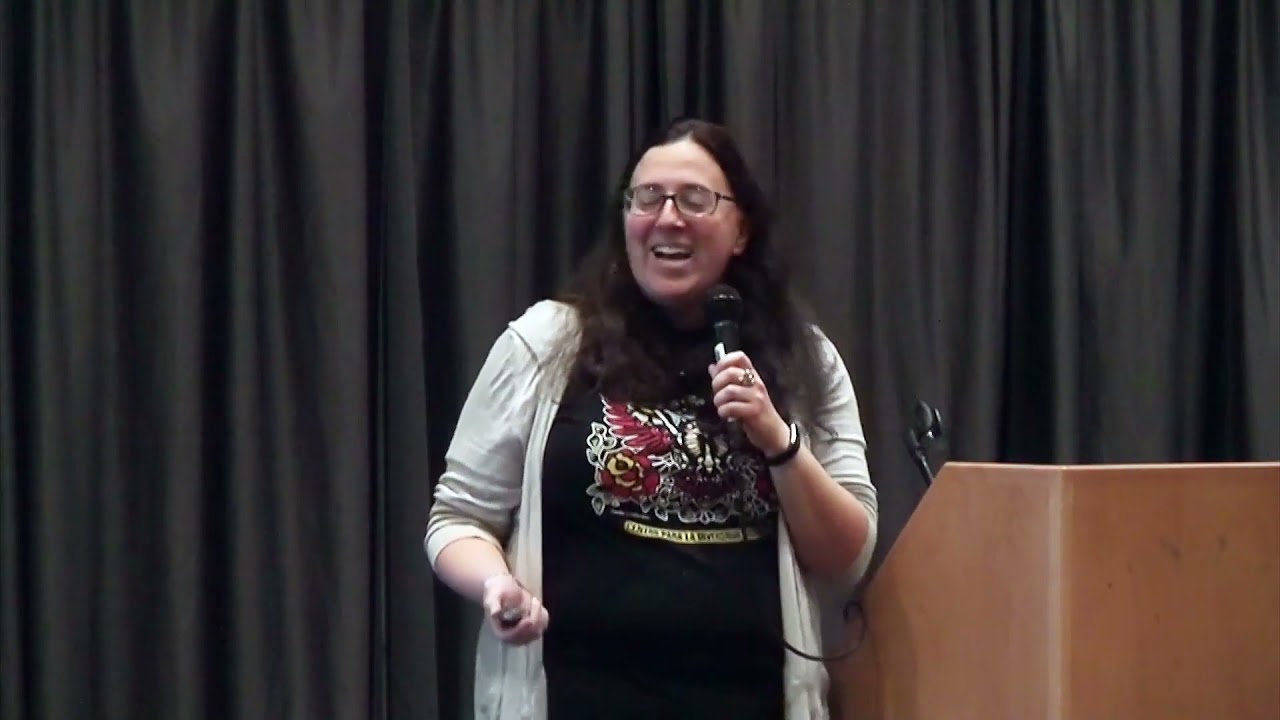Director of biodiversity charity celebrates population decline as it will help governments meet climate change goals
According to a Scientific American magazine opinion piece, a world with fewer people means a different climate and better outcomes for the planet’s remaining inhabitants – human and otherwise.

Stephanie Feldstein’s opinion article refers to the United Nations’ forecasting that dozens of countries’ populations will be shrinking by 2050 as “good news”.
“This is good news. Considering no other large animal’s population has grown as much, as quickly or as devastatingly for other species as ours, we should all be celebrating population decline.” – Population Decline Will Change the World for the Better, Stephanie Feldstein, Scientific American, 4 May 2023.
The article asserts that fewer people require less feeding and energy.
The assumption is bolstered further by the notion that the globe is suffering from overpopulation, which is reducing wildlife habitats and ecosystems as human involvement has a bad impact on everything around it.
Ultimately the opinion piece, written by the Population and Sustainability Director at the Centre for Biological Diversity, states: “Population decline is only a threat to an economy based on growth. Shifting to a model based on degrowth and equity alongside lower fertility rates will help fight climate change and increase wealth and well-being.”
Humans therefore should choose between population growth and the survival of the planet, the essay posits, repeating previous claims that “declining populations and ageing demographics” help governments meet climate change goals. Slowing population growth “helps reduce carbon emissions,” Feldstein says.
Igor Chudov has written several articles highlighting reductions in live births and increases in mortality around the world so Stephanie Feldstein’s remarks in Scientific American caught his eye. Chudov noted that Feldstein recommends two books on her website. One of them, The Jane Effect, is devoted to Jane Goodall. Just like Feldstein, Goodall openly states her desire for a reduction in the world’s population. At the World Economic Forum’s Davos 2020 meeting, Goodall suggested the world human population should be reduced to an estimated 450 million.
Feldstein leads the Centre for Biological Diversity’s work to “highlight and address threats to endangered species and wild places from runaway human population growth and overconsumption.” Linking human population and consumption is the basis of The Limits to Growth. Similarly, when she refers to “a model based on degrowth […] alongside lower fertility rates,” she is parroting The Limits to Growth ideology.
The Limits to Growth is a report commissioned by the Club of Rome in the run-up to the United Nations’ first-ever environmental summit in Stockholm in 1972. Through a computer-simulated model, the report “identified that human decision-making was luring our entire population slowly but inexorably toward environmental disaster,” an article published by the Club of Rome stated. As we have learnt through Neil Ferguson’s manipulation of data through computer modelling from the start of the covid era, predictive computer modelling can easily cherry-pick, skew, and re-frame data sets according to the desired outcome of controllers of the computer programmers. And it appears this is exactly what the models used to produce The Limits to Growth did.
Twenty years after The Limits to Growth was published, co-founder of the Club of Rome Dr. Alexander King admitted the essential fraud of their environmental agenda in his 1991 book, The First Global Revolution. He admitted that the “pollution, the threat of global warming, water shortages, famine” was merely a ploy to justify an attack on “humanity itself.” King famously said: “The real enemy is humanity itself.” This “zero growth” anti-human agenda, whose early proponents also include David Rockefeller and Maurice Strong, is now being rolled out as The Great Reset, Agenda 2030, and the Net Zero Carbon ruse.
Dennis Meadows, his wife Donella Meadows, Jay Forrester and Jørgen Randers authored The Limits to Growth. In 1992, on the 20th anniversary, the team updated it in a book called Beyond the Limits. In 2002, three of the original authors – Donella Meadows, Jorgen Randers, and Dennis Meadows – published another updated study Limits to Growth: The 30-Year Update. Donella Meadows died in 2001, the year before the latest publication.
The message in The 30-Year Update remained the same. The authors concluded that “humanity is dangerously in a state of overshoot.” This is alarmist wording even based on their own definition of the terminology. A synopsis of The 30-Year Update explained what an “overshoot” meant: “When an overshoot occurs, it induces stresses that begin to slow and stop growth.”
Yet, curiously, the only solution to the perceived, or perhaps more accurately contrived, problems that the authors suggest is to control the human population. The synopsis went on to state that the world can respond in three ways to signals that resource use and pollution emissions have gone beyond their sustainable limits.

One way is to disguise, deny, or confuse the signals.
A second way is to alleviate the pressures from limits by employing technical or economic fixes. “These approaches, however, will not eliminate the causes of these pressures,” the synopsis stated.
The third way is to work on the underlying causes. To do this, the models used to produce The Limits to Growth can provide the answers, so the synopsis claimed. These are the same models that manipulated data sets. It’s no surprise then that the answer the models came up with was what the controllers were looking for: that couples limit their family size to two children, that people moderate their material lifestyle, and that technologies are added to abate pollution, conserve resources, increase land yield, and protect agricultural land. With these implemented, the synopsis of The 30-Year Update declared: “The resulting society is sustainable.”
On the 50th anniversary of the publication of The Limits to Growth, The Donella Meadows Project, created to preserve Donella Meadows’s legacy, published an interview with Dennis Meadows. When asked how reality was tracking with his scenarios created 50 years before, Meadows gave a response which should raise the eyebrows of even the most faithful follower:
“Accuracy is not really the issue here. Our goal in doing the original analysis was to provide a conceptual framework within which people could think about their own options and about the events that they saw around them. When we evaluate models, we always ask whether they’re more useful, not whether they’re more accurate.”
And, when asked how he viewed the impacts of pollution and a series of “depletion crises” caused by a growing population, Meadows gave another eye-opening response for the faithful:
“There is, of course, no possibility of avoiding climate change, even if we did reduce emissions to net zero.”
“We’re far above sustainable levels. Even if we could avoid climate change, there is no possibility of sustaining 8 billion people at anything near the living standards we’ve come to expect. There have been some academic exercises to calculate how many people the earth could support. That’s really a silly sort of exercise, because it ignores most of the values and goals that we have for making human life on this planet worthwhile: equity, liberty, welfare, human health. These are all intimately affected by overpopulation. I don’t know what a sustainable population level is now, but it’s probably much closer to a billion people, or fewer, if we aspire for them to have the kind of living standards and the political circumstances that we enjoy in the West.”
From the above we can surmise that for Meadows, at least, depopulation is not about the environment, “climate change” or “saving the planet.” For Meadows, reducing the world’s population is to maintain or improve “living standards and political circumstances.”
However, Stephanie Feldstein who has been infected by the Club of Rome’s ideology, still attempts to justify depopulation using “climate change.” Although she does also include Meadows’ idea of “living standards” by adding depopulation will increase “wealth and well-being.” It won’t, of course.
According to former intelligence officer Dr. John Coleman, the Club of Rome is an international foreign policy arm of the Committee of 300. The members of the Committee of 300 represent the world’s wealthiest families. This offers a relatively quick and simple solution to improving the wealth, well-being, political circumstances and more of the world’s population, one which seems to have eluded Meadows, Feldstein and others who follow The Limits to Growth ideology.
In January 2023, Oxfam published an article that stated the “richest 1% bagged nearly twice as much wealth as the rest of the world put together over the past two years.” According to Oxfam, billionaire fortunes are increasing by US$2.7 billion a day with the richest 1% taking nearly two-thirds of all new wealth worth US$42 trillion created since 2020. Putting it another way, a billionaire gained roughly US$1.7 million for every US$1 of new global wealth earned by a person in the bottom 90%. The trend showed no signs of slowing down as profiteering from the covid era began to tail off. Billionaire wealth surged in 2022 with rapidly rising food and energy profits.
Oxfam also noted that at the same time that the 1% were accumulating eye-watering wealth, “at least 1.7 billion workers live in countries where inflation is outpacing wages, and over 820 million people – roughly one in ten people on Earth – are going hungry.”
Oxfam is calling for a systemic and wide-ranging increase in taxation of the super-rich to claw back crisis gains driven by public money and profiteering. However, many advocacy groups are going further and calling for the entire wealth of the super-rich to be redistributed to the 99%.
yogaesoteric
June 29, 2023
